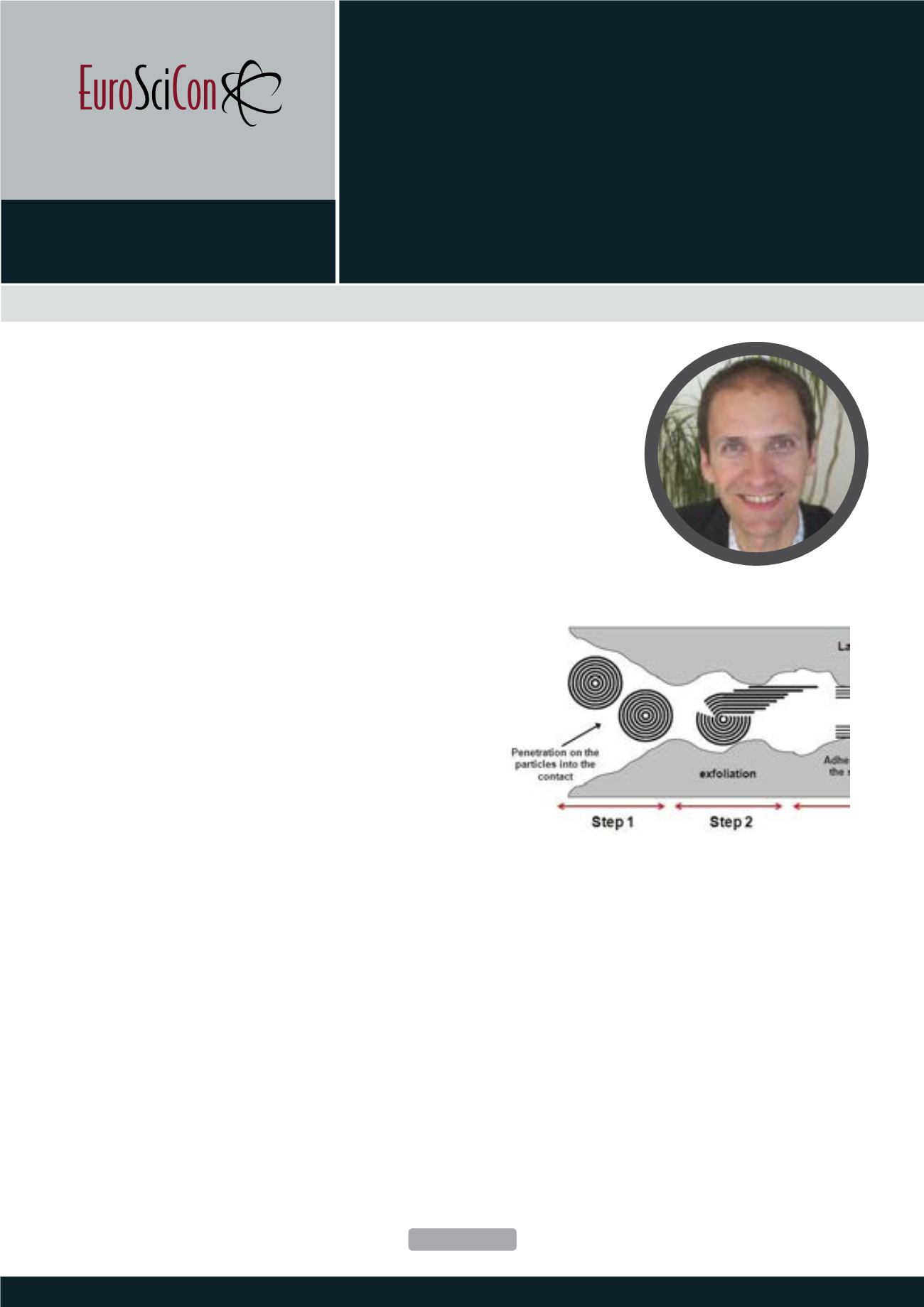

Nano Research & Applications
ISSN: 2471-9838
April 26-27, 2018
Rome, Italy
NanoMat 2018
Page 18
17
th
Edition of International Conference on
Emerging Trends in
Materials Science and
Nanotechnology
T
herehasbeengrowinginterestinnanoparticlesfortribological
applications over the past 20 years. Studies have shown the
remarkable lubricating properties, viz., friction-reducing and
anti-wear, of these small objects. This makes them potential
candidates for replacing the molecular lubrication additives
currently used in automobile lubricants, known to be pollutants
and less efficient in some specific conditions. This has not
gone unnoticed to the oil companies and the car manufacturers.
All of them are faced with the problem of providing lubricants
that meet the needs of the technological evolution of engines
while respecting ever stricter environmental norms. Among the
nanoparticles with proven tribological performance are carbon
nanotubes and onions, boron nitride nanoparticles, and inorganic
fullerene-like (IF) metal disulfides (IF-MoS
2
, IF-WS
2
). The latter
exhibit the best friction-reducing and anti-wear properties
ever observed. These nanoparticles have been the subject of
detailed investigation in the lab for more than fifteen years now,
and during this time, many key issues have been tackled, such
as the conditions leading to these properties, the lubrication
mechanisms coming into play, and the influence of parameters
such as size, structure, and morphology of the nanoparticles on
their tribological properties and the lubrication mechanisms.
These years of research have given us a good understanding of
the way these nanoparticles behave, and we can now identify the
key parameters to be adjusted when optimizing their lubrication
properties. During this presentation the performance and the
lubrication mechanism of the metal disulfide nanoparticles will
be presented and we will see how to move from the nanoparticle
to the development of new highly efficient nanolubricants for
automotive applications (engine and gearboxes).
Figure 1:
Lubrication mechanism of the inorganic fullerene-like metal
disulfide nanoparticles.
Recent Publications
1. Jenei I and Dassenoy F (2017) Friction coefficient
measured on a single WS2 nanoparticle: an
in situ
transmission electron microscope experiment.
Tribology Letters 65(86):2-8.
2. Ussa Aldana P, Dassenoy F, Vacher B, Le Mogne T and
Thiebaut B (2016) WS2 nanoparticles anti-wear and
friction reducing properties on rough surfaces in the
presence of ZDDP additive. Tribology International
102:213-221.
3. Ussa Aldana P, Dassenoy F, Vacher B, Le Mogne T,
Thiebaut B and Bouffet A (2016) Antispalling effect of
WS2 nanoparticles on the lubrication of automotive
gearboxes. Tribology Transactions 59(1):178-188.
Nanomaterials as lubricant additives
for more efficient and more environment
friendly engine lubricant
Fabrice Dassenoy
Ecole Centrale de Lyon, France
Fabrice Dassenoy, Nano Res Appl, Volume:4
DOI: 10.21767/2471-9838-C1-007
















